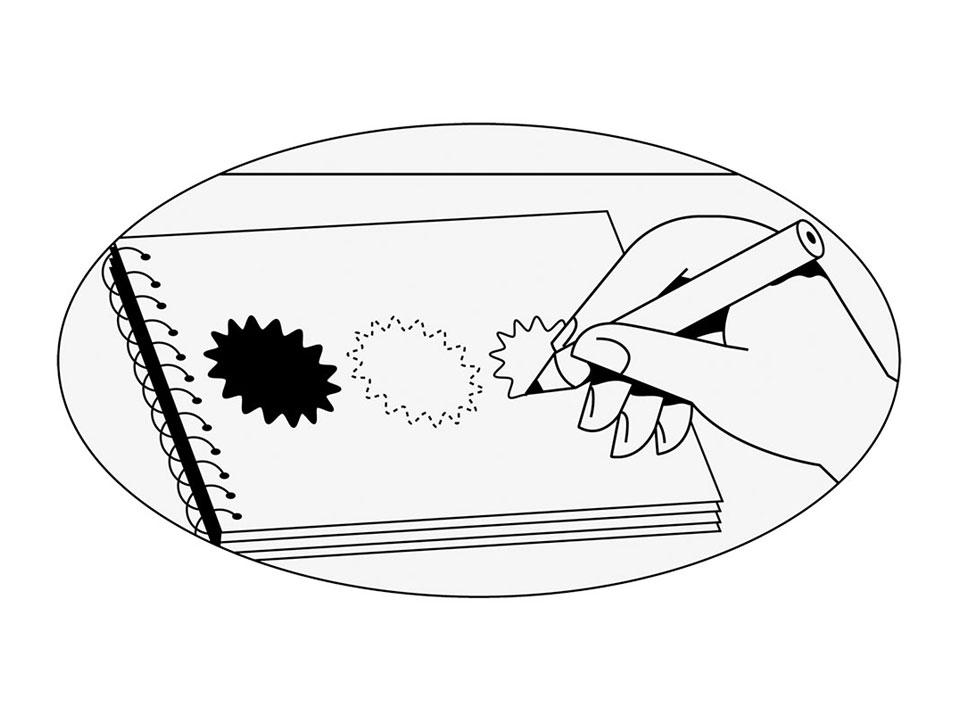Creating Self-Initiated Projects
You may not notice it, but your experience on any US government website is a carefully crafted experience.

Self-initiated projects are a great way to exercise your creativity, experiment with techniques & show the world what you’re capable of making. Sometimes, these ideas can turn into businesses. Even when the goal isn’t profit, these types of projects can often lead to people discovering your creative work & getting more work in the future. In 5 steps, I’ve broken down how to come up with ideas, how to make them happen & how to get them noticed.
1. Coming up with ideas
Many people struggle with ideas for self-initiated projects or business concepts. It’s easier with client work since you're given set rules & limitations from the client or boss, such as timeline, budgets, pre-existing style guides or creative directions. With your own projects, you can do anything! That is exciting but also daunting. Most people drown when possibilities of what you can do are endless. It’s like going to a restaurant with a thousand menu items, it’s much harder to choose what you want.
So, how do you come up with ideas? I believe many of the best concepts start with the question, “Why?” What are the struggles in your life? Start a list of everything that drives you mad. These could be things that bother you in your life, daily routine, things that bother you about yourself or things you think can be improved in the world.
2. What can you do about it
Ask yourself what you could do about each of these "Why!?" questions. Is there a way you could solve or tackle these problems through a website or app? Could you confront any of these issues through an art project using your creative skills? Could you start a dialogue about this topic through an Instagram account?
After you have your list of ideas of what you could create, hone in on the ones you think are most feasible with your time and resources. If your idea is to make a documentary but you don't have access to film equipment, resources for travel or editing costs, maybe choose a simpler idea or go back to the drawing board on what you can actually make happen.
’ve read many biographies of founders who started successful companies, and their businesses almost always start with a real struggle, frustration or problem they saw in the world or in their life that they wanted to fix. From real world experience, the people chasing fame and money rarely wind up successful. It's the people who earnestly set out to change something and make a difference through their projects, products or work who most often succeed.
3. Create a plan
The next challenge is following through and producing your idea. One of the most important constraints with personal work is a timeline. If you don’t keep yourself on a strict schedule like you do with your client work, you’ll never get anything done. So the first constraint should be a deadline. Put milestones and a project launch date on the calendar and treat it like client work. Perhaps having a partner in self-initiated work helps because you can hold each other accountable for meeting these deadlines, and you can push each other to get things made. So find a buddy like you would for going to the gym.
4. Develop a unique style
If you have a unique creative style for your project or unusual delivery method, it can help differentiate your work and get noticed.
One could write an entire book on how to approach branding, but here are a few quick tips from us. First, think about what you want your project/brand to convey to your audience in terms of adjectives. Pick no more than three words (ie. Adventerous, Happiness, Calm, etc). When choosing typefaces, compositions, or colors, think about these adjectives and choose design elements accordingly. Also, try giving yourself creative constraints which can help you create an ownable style. Try limiting color palettes, shapes, or the tools you use. The tighter and the more unusual the constraints, the easier it is to do something unique.
5. Get your work noticed
Now that you've made your new self-initiated project or business idea, it's time to put it out into the world. If you are creating a business idea and have funding for a PR agency, great! If not, no worries, you can handle this on your own. Make a list of all your favorite blogs, websites and Instagram accounts that might feature your work. Now find the email addresses of the editors on those blogs. For Instagram, you can send a DM. Message them about your new project/business that you are launching. Include a short description of what the project is about, a link to the work, and an asset library of images or videos that help illustrate what the project is. If you're not getting responses from the larger blogs/accounts, try smaller ones! The smaller ones will be less inundated with requests and might be more likely to give you a feature. Good luck & happy launch day!